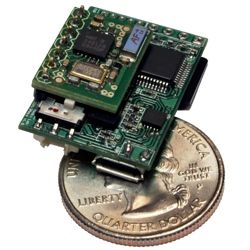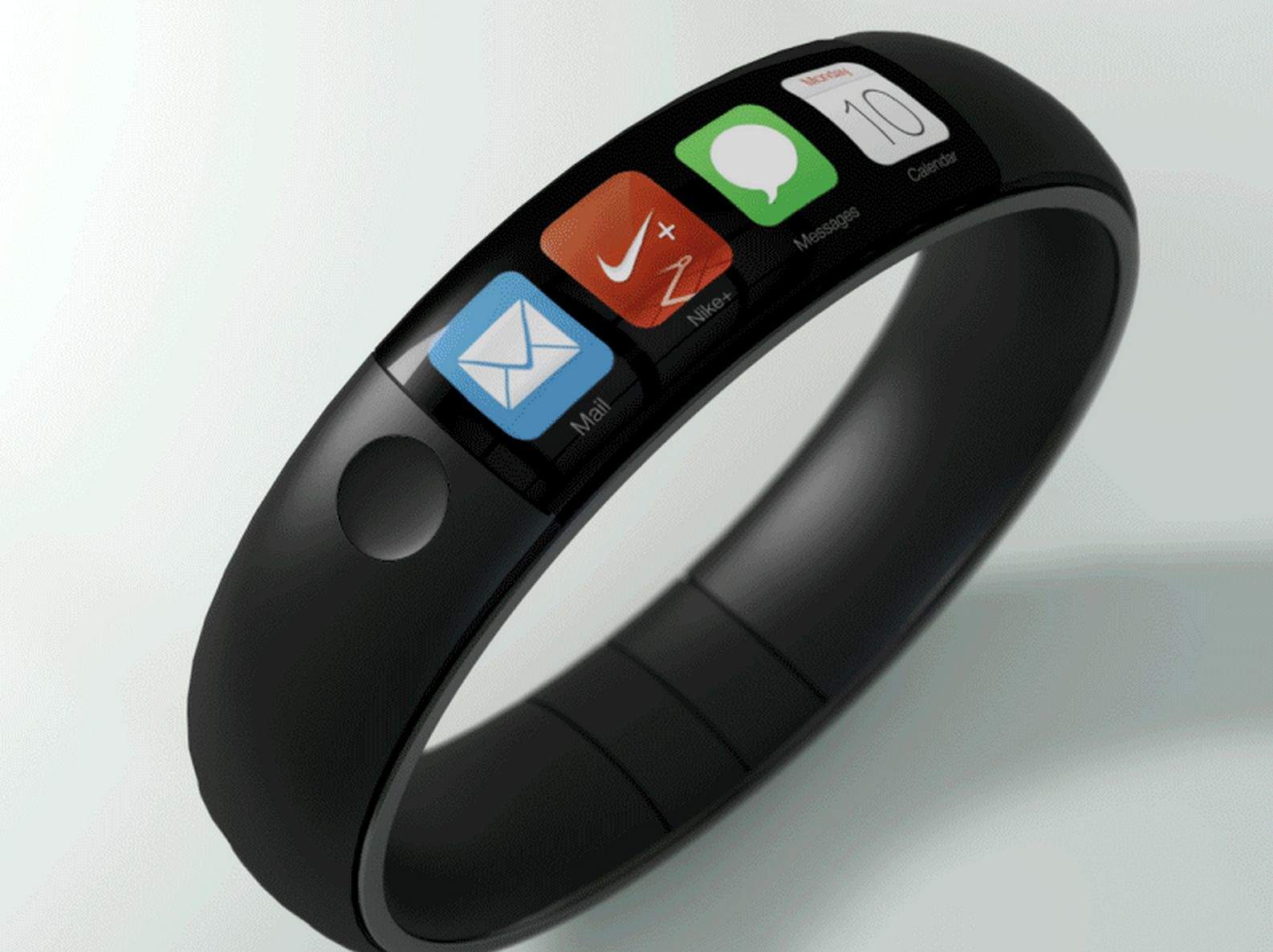Design questions aside, the true mystery about Apple’s long-rumored iWatch lies in exactly what types of health-related sensors the wearable might include. A recent report claims the iWatch will sport an astonishing 10 different sensors, including one for sweat.
While pedometers, accelerometers, thermometers and every other o-meter Jony Ive can get his hands on might all make sense for a smartwatch, we’re wondering what Apple could do with a sweat sensor? Other than verify that, yes, your sweat glands are pouring out more fluid per minute than Niagara Falls during your jog?
It turns out that adding sweat sensors would do more than differentiate the iWatch from smartwatches by LG, Motorola and Samsung right out of the gate. It could make the iWatch the most “personal” device you’ve ever shackled yourself to, with surprising applications that go far beyond fitness and health.
A sweat sensor isn’t a given for the iWatch — in fact, not even the iWatch name is a certainty at this point, given the secrecy surrounding Apple’s long-expected entry into the smartwatch category. However, while adding a quality sweat sensor to a smartwatch sounds like a tricky feat of electrical engineering, it’s actually so inexpensive and relatively easy to accomplish that it’s shocking Samsung and the like haven’t considered adding one to their devices.
Apple wouldn’t comment on whether it’s looking into sweat sensors for use in its devices. But Cult of Mac talked with some top scientists in the application of electrodermal response technology, and they shared some amazing — but purely speculative — guesses about where Apple could take the tech in the next three years.

Sweat sensors known as electrodermal response sensors are already fairly cheap to manufacture. (You can purchase an EDR sensor on the Internet for $30.) Adding wireless capabilities boosts the price, but that’s definitely within reach for Apple, according to Javier Rivera, a Ph.D. candidate at MIT Media Lab who has spent years using electrodermal activity to analyze real-life settings.
“It’s a very easy sensor to incorporate on a smartwatch,” Rivera told Cult of Mac, “but implementing it in a way that’s very meaningful could be tricky without extra contextual sensors like temperature, movement, pulse, etc.”
While wearables are all the rage right now (at least theoretically), smartwatches like the Pebble and Samsung Gear haven’t exactly taken the world by storm. Google is beating Apple to market with its Android Wear platform, but nobody has yet released a truly transformational device that does much more than serve up notifications and, oh yeah, tell the time. If Apple can add sweat sensors and other biometrics to the mix, and use smart software to make sense of all that data, it could have another game-changer on its hands.
EDR sensors determine your sweat rate by measuring a small flow of electricity on your skin, only they track micro-sweat changes on the skin (electrodermal activity) that you don’t even notice. Information contained in this stream of sweat data comes from a mixture of your body’s responses to fear, ambient temperature and detoxification (excretion and sweating off bacteria and dirt).
The potential data to be mined and analyzed from ERD sensors could prove powerful, but the iWatch would require extra sensors — lots of them — to add valuable context. However, if Apple’s dream team of bio experts have done their homework, the iWatch’s sweaty data could be used to change not just fitness, but gaming, social networks and recommendation engines, as well as adding an extraordinary marketing weapon to Apple’s arsenal that Google and Amazon can’t match.
It’s probable that Apple wants the iWatch to do more than simply tether users to their smartphone screens — it wants iWatch to add context to everything they do. It would tell you how fit you are, like existing fitness devices, but it could also potentially tell when you’re stressed, which songs you like, what food satisfies your cravings and who you enjoy spending time with.
What sweat sensors can and can’t do
Apple hasn’t given the world any hints about what it might use a sweat sensor to measure, but there’s one thing we know it won’t be used for — recording blood glucose levels.
Rumors have suggested the iWatch will be able to measure users’ blood sugar levels non-invasively, but according to Josh Windmiller, CEO of Electrozyme, that’s simply not possible with an EDR sensor.
“You can’t do glucose sensing through the sweat and expect it to correlate with the blood,” said Windmiller, whose post-doc work on biomedical sensing led to his startup, which makes sweat sensors in the form of temporary tattoos. “There are a few physiological processes that prevent real-time blood glucose monitoring via sweat. But there are other important biomarkers that could be detected to provide info on electrolyte balance, exertion levels or fatigue.”
Fitness freaks will love a smartwatch that gives instant feedback on how hard they’ve worked out and when they need to slow their pace or grab a Gatorade. Apple could also apply EDR data in a number of other ways.
Reading EDR data isn’t a problem. It’s already been used to detect lies and study stress levels and engagement. MIT has used it to detect early warnings of seizures, and the U.S. military monitors solider fatigue through EDRs.
Stressing the data
Apple would need to distinguish itself by separating the signal and noise. One simple way to accomplish that would be by using the iWatch’s EDR sensor in tandem with other data to quantify a wearer’s stress level, adding valuable context to daily life. Focusing on stress alone would make a huge impact on the fitness market because everyone suffers from it and its affects can be more devastating than a stubbed toe after kicking the wall in frustration.
Apple is on a quest to curate as much of your biometric data as possible.
“You may become obese, have sleep disorders, anxiety, depression, headaches and many other things,” said Rivera. “If we can use modern technologies to monitor when stress is happening, potentially we could deliver some just-in-time intervention to manage the effects better.”
Imagine an iWatch that does more than simply send you a notification that you have a meeting in 30 minutes. Imagine a wearable that detects when you’re stressed out, then advises you to step away from your desk or plays your favorite music. Parents could track children’s vitals, and school teachers could get a report on each student’s engagement levels after every class. Couple that stress data with exercise and vitals data and you have a device that could potentially help wearers dynamically manage their lives.
The money machine
Doctors, physicians and the rest of the health care industry would go nuts over having instant access to patients’ heart rate, oxygen saturation, blood pressure and other vital stats, but there’s one surprising group that might be more desperate than any other to get their mitts on your personal electrodermal data: marketers.
Gathering an objective and continuous measure of stress and other simple hormone markers could be a boon for marketers looking to assess the quality of their goods. By monitoring electrodermal activity while you’re using a product, your iWatch could detect at what point in the movie you start getting stressed, which game level gets you the most amped, and which summer pop anthem is most likely to send you into a manic streak.
“The only way to know what consumers want is to watch what they actually do,” said Chris Westland, professor of information and decision sciences at the University of Illinois in Chicago. “A ‘lifelogger’ like the iWatch, linked into iCloud-based systems similar to Google’s AdWords, would give Apple an edge in the ultimate revenue-generating industry. They would be the new Mad Men.”
“iWatch could quickly become your biometric key to the entire Apple ecosystem”
Sharing your EDR and stress-related data with third parties might be a privacy nightmare, but Apple could keep it all in-house to create the ultimate personalized recommendation engine that knows what you like better than you do. Using tell-tale signs in your sweat to determine what you prefer, an iWatch tied to iTunes could help you find movies, music, books or apps you’re more likely to enjoy — and you wouldn’t have to rate a thing.
iWatch could quickly become your biometric key to the entire Apple ecosystem, queuing up sappy love dramas when you’re down and suggesting new indie albums you’re bound to love. EDR data could even be used to sync your Beats Music playlist to your cadence while jogging, then switch to new songs based on your mood. Outside of music and movies, the possibilities are even more enticing to marketers.
“These could be used in recommendation engines to suggest other things for customers to buy and would be especially powerful if the consumer were shopping on an iPhone, iMac or Mac laptop and the iWatch was linked into all of these activities,” Westfield told Cult of Mac. “If this translates into sales, then Apple has another money machine.”
Put that iWatch data in the hands of developers and Apple could completely change the way you interact with and consume all media. With TouchID and the additions of HealthKit APIs and the Health app for iOS 8, Apple has already shown it wants to curate as much of your biometric data as possible.
Surely, Apple brass has envisioned something grander than telling users how many steps they’ve walked in a day.
“They’re trying to come up with the equivalent of the App Store for sensors with the Health app and iWatch,” said Windmiller.
Pairing a sweat sensor with other vital-signs sensors could finally bring the type of context scientists like Rivera and others have been hoping for, but Windmiller isn’t so optimistic that Apple will nail medical data on its first attempt.
“Apple won’t be able to address all the challenges and issues right off the bat,” said Windmiller. “There’s a lot more they’ll need to do that isn’t being addressed by anyone. I think the device they’re going to come out with will be more form over function.”
But if there’s one company likely to hit a grand slam on its first swing in health trackers, Windmiller admits it would probably be Apple.
We already know Apple lured top doctors, scientists and designers away from prestigious posts to work on the iWatch and probably other, more mind-blowing wearables.
It’s almost impossible to believe that Tim Cook has nothing more up his sleeve than a fancy pedometer that receives iPhone alerts. If Apple has created a wearable that provides all-important context to a steady stream of (sometimes sweaty) biometric data, the iWatch could be the most personal device ever created.


